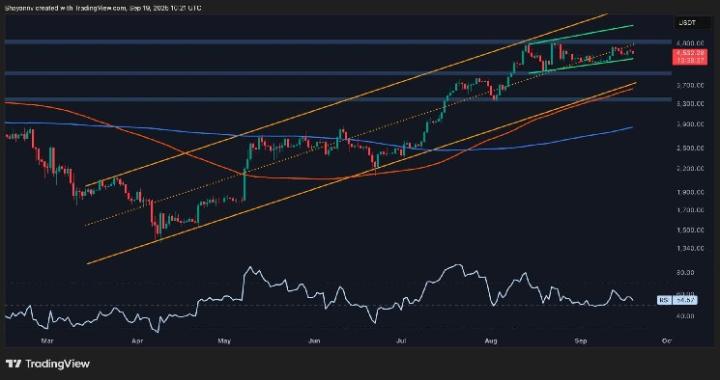In early September, a paper posted on arXiv dropped a bombshell in the academic community—GPT-5 was written into the mathematical research results.
The researchers wrote publicly in the article: GPT-5 completed a mathematical task that had never been solved before in their experiment, and directly incorporated the results into the formal manuscript.
This is the first time that a large language model has appeared in a mathematical research paper as a "theorem contributor."
The paper deals with a core problem in the Malliavin–Stein framework.
GPT-5 is written into a mathematical paper for the first time
In mathematical research, the "Fourth Moment Theorem" is a fundamental yet tricky piece of the puzzle.
It was originally proposed by Nualart and Peccati to determine whether a certain type of random variable converges to a normal distribution.
But this theorem has long had a "gap":
It can only tell you "whether it will converge", but it cannot quantify "how fast it will converge".
The research team chose to leave this gap to GPT-5.
Their question is very direct: In the Malliavin–Stein framework, can the "qualitative convergence" of the fourth moment theorem be upgraded to "quantitative convergence" and give a clear speed limit?
The answer given by GPT-5 is surprising. It derives a new conclusion about the convergence rate:
A new theorem derived from GPT-5: The fourth moment theorem has a clear convergence rate for the first time and is included in the paper intact
In other words, it proves that if the fourth moment gradually approaches the value of the Gaussian distribution, then the speed of convergence can also be clearly characterized.
The significance of this result is more than just solving a blank spot.
For mathematical researchers, the rate of convergence often determines whether a theorem can be truly applied to complex models, such as high-dimensional random fields, extreme value analysis of financial data, and even simulation of random processes in physics.
Previously, we could only say in general terms that it "will converge", but now that there are quantitative boundaries, many applications have become feasible.
More importantly, this process is not for the research team to "beautify GPT-5", but to directly incorporate its derivation into the formal results.
This is the first time that a large language model has been included in the main body of a mathematical research paper as a "theorem contributor."
Not a one-on-one fight
It’s a combination of “professor + AI”
When people see GPT-5 being included in a paper, it’s easy for them to think of “AI being able to independently solve difficult mathematical problems.”
But the truth is far from that simple.
GPT-5 wrote a theorem statement right from the start, which seemed logically complete, but it used an incorrect formula in the derivation of the key link Cov(Y², Z²).
If not caught in time, this error would simply ruin the entire proof.
The researchers asked:
Can you check your formula for Cov(Y², Z²) and provide me with the details?
GPT-5 obediently gave a detailed explanation, but it was still wrong.
The researchers simply pointed out:
I think you are mistaken in claiming that (p+q)!‖u⊗v‖² = p!q!‖u‖²‖v‖².
Only then did GPT-5 admit that its previous reasoning was false and adjusted its thinking.
Under the guidance of the researchers, it finally wrote the correct derivation and then organized the results into a complete paper as required.
This repeated error correction process made the author of the paper sigh: Working with GPT-5 is like training a smart but impulsive intern.
It can quickly propose directions and generate proofs, but it always needs a human mentor to watch over it, point out errors, and allow it to correct them.
Mollick: GPT-5 Pro can do new math, but only under the guidance of a professor
This is not a one-on-one fight between AI, but a combination of professor and AI.
Outsiders exclaimed, insiders remained calm
When the news that GPT-5 was included in the paper spread, the first reaction of many people outside the field was "a historic moment."
On August 20, Microsoft researcher Sébastien Bubeck posted on X:
He used GPT-5 Pro to solve an open problem in the field of convex optimization.
In just a few minutes, GPT-5 raised a classic boundary from 1/L1/L1/L to 1.5/L1.5/L1.5/L.
It sounds like boring mathematical symbols, so why did it cause such a sensation?
In convex optimization, 1/L represents the upper limit of the convergence speed that the algorithm can achieve, and this upper limit directly determines how fast the algorithm runs.
Researchers have long been accustomed to treating it as a law, but GPT-5 gave a tighter limit in a few minutes: 1.5/L.
This means that, if correct, it could mathematically "speed up" a whole class of algorithms across the field.
The post quickly took social media by storm and was seen by many as the opening moment of the era of AI mathematicians.
However, the interpretation within the mathematical community is much more sober.
Optimization expert Ernest Ryu commented:
This demonstration by GPT-5 relies heavily on a tool already well-known to experts: Nesterov’s theorem… An experienced researcher could also obtain equivalent results in a few hours.
In other words, what outsiders see as a "breakthrough completed in a few minutes" is actually "the rapid reuse of familiar tools" in the eyes of insiders.
Is it a scientific research accelerator or a stumbling block for PhDs?
GPT-5 was written into the paper and looked like a scientific research accelerator, but the author wrote down considerable concerns at the end.
Researchers have found that what GPT-5 is best at is actually quickly piecing together existing tools into results.
Technically correct, but lacking in true originality.
If more and more such "jigsaw puzzle studies" flood into the academic community in the future, the literature may be overwhelmed by a large amount of "correct but mediocre" results, and truly groundbreaking work will find it more difficult to stand out.
What we need to be more vigilant about is the growth path of doctoral students.
According to the traditional pace, they have to rely on repeated reading, trial and error to slowly develop research intuition.
But if AI can generate technically correct deductions at any time, these crucial trial-and-error steps can be skipped. The paper states it very bluntly:
If students become overly reliant on AI… they may lose necessary opportunities to develop these essential skills.
This concern is not unfounded.
OpenAI researcher Noam Brown also publicly reminded:
In other words, GPT-5 can already generate new theorems, but will it turn scientific research into a "fast-food assembly line" or propel humanity into a new round of knowledge explosion? No one can guarantee the answer.
From Bubeck's convex optimization case to the quantitative breakthrough of the Malliavin–Stein theorem, GPT-5 is no longer a toy in the laboratory, but has actually appeared in the text of academic papers.
It can generate theorems, derive proofs, and even complete the entire research process under the guidance of a professor.
But the question also arises: when "correct but mediocre" results can be replicated on a large scale, will original breakthroughs be drowned out?
When AI skips the most important trial and error and exploration process for doctoral students, will academic training lose its foundation?
In the coming years, the role of AI in scientific research may change faster and more dramatically than anyone imagines.
So the real question is: when AI can already write papers, what else do human researchers need to write?
References:
https://x.com/polynoamial/status/1964464373516427491
https://x.com/emollick/status/1964447221853966775
https://x.com/ns123abc/status/1964724813940842934
https://x.com/SebastienBubeck/status/1958198661139009862
https://arxiv.org/abs/2509.03065
This article comes from the WeChat public account "Xinzhiyuan" , author: Xinzhiyuan, editor: Qingqing, and is authorized to be published by 36Kr.

















